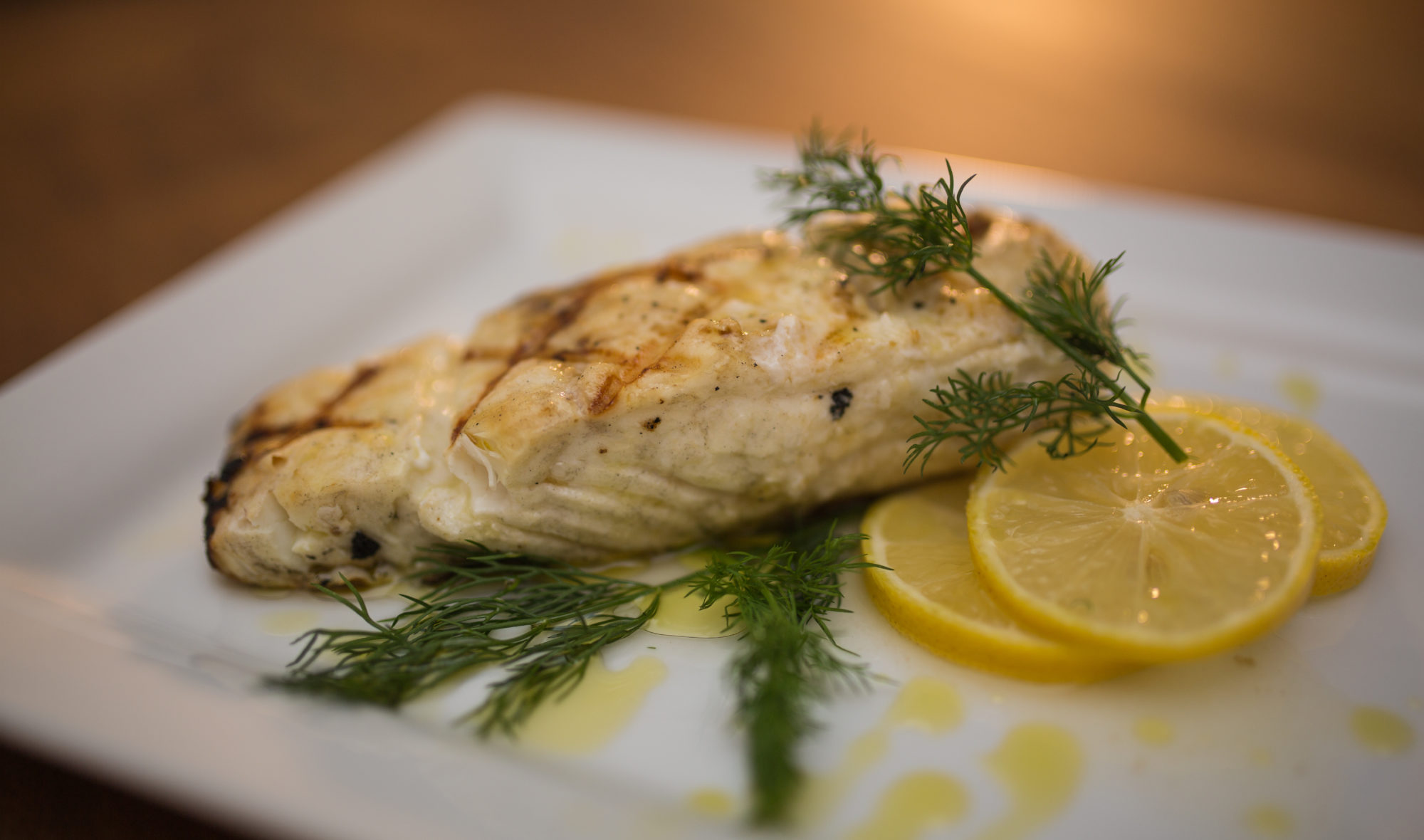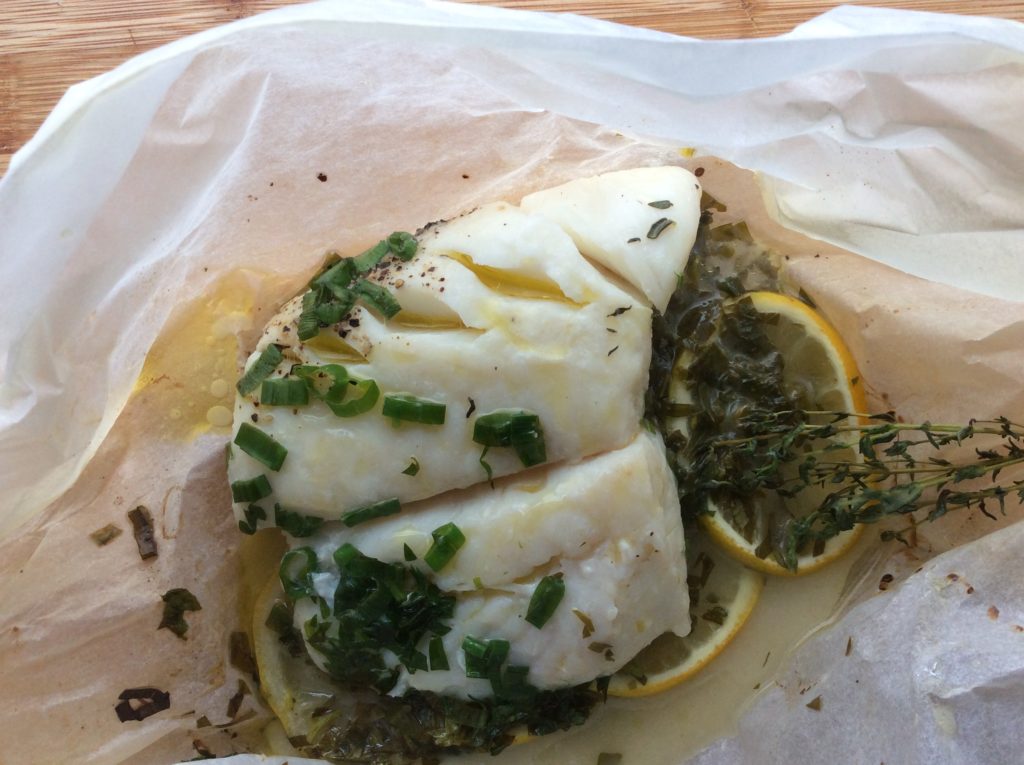Halibut


Halibut is a large fish found in the Pacific and Atlantic oceans. Its firm, white flesh has a mild flavor and flaky texture. Halibut is a good source of protein and B vitamins. It can be prepared many ways, such as baked, poached, fried, or even grilled.
Halibut is a fish variety with firm, white flesh and a mild flavor. A large fish belonging to the flatfish family, it can be found in the Pacific or Atlantic ocean – though the population in the Atlantic ocean has dropped dramatically in recent years.
Typically sold in fillets, halibut has a meaty texture that can hold up to a variety of cooking techniques, including baking, frying, and sautéing.
Look for halibut in the fish department of your grocery store or at your local fishmonger.
Halibut is bright white in color. You are likely to find it in pre-cut fillets.
A 100g portion of halibut, cooked in dry heat, contains 111 calories, 22.5g of protein, and 1.6g of fat. Halibut contains no carbohydrates, sugar, or fiber.
Halibut is a good source of B vitamins (such as B12, B6, and B3). It also offers potassium, selenium, and phosphorus.
Choose Pacific halibut, rather than Atlantic halibut. The latter has suffered from overfishing and a significant drop in population.
As with any fish, look for freshness. A fillet of halibut should have moist, dense flesh. Dry looking texture and dull color indicates age.
While you may smell a hint of the sea, avoid the fish if it has a strong or foul smelling odor.
Like any fish, halibut should be stored in the coldest part of your refrigerator and eaten soon after purchase.
Once cooked, leftovers can be stored in an airtight container in the fridge for up to 3 days.
Halibut can handle many cooking preparation techniques, including sautéing, poaching, baking, or even grilling. It makes excellent fish and chips, or even tacos and burritos.
Avoid overcooking halibut as this dries out the fish and takes away from its delicate flavor and pleasant texture. The fish should be flaky and moist when it is done cooking.

Baking fish in parchment paper with aromatic herbs and vegetables is one of the simplest and tastiest ways to cook fish at home. The fish steams itself, retains its moisture and flavour, and develops a light sauce naturally; no extra work required.
Prep Time: 5 minutes Cook Time: 15 minutes Yield: 1 serving
Place a large plate sized piece of parchment paper on the counter and preheat oven to 400 degrees Fahrenheit. Slice the lemon, chop the herbs, and smash the garlic. (You can “smash” garlic with the flat side of a knife, the bottom of a heavy pan or cleaver, or the heel of your palm.) Season the fish generously, top to bottom, with salt and pepper. Place the lemon slices in the middle of the parchment and add the fish, capers, garlic, and herbs. Bring the top and bottom edges (the “north” and “south”) together above the fish and fold downwards together, creasing the paper as you go (like closing a bag of coffee). Flatten the ends and fold the paper like you’re wrapping a present. Tuck the edges under the parcel or fold upwards and tie together.
Bake for 8 minutes on a sheet tray. Remove from the oven and carefully unwrap the parcel as it will release its steam when you open it. Finish with a knob of cold butter if desired and serve immediately.
Precision Nutrition’s Encyclopedia of Food expands every single month as we highlight new foods and showcase beautiful food photography. If you’d like to stay up to date, simply click this link. From there, we’ll send you a FREE copy of our recipe book. We’ll also let you know when new and delicious foods are added to the site.
Halibut is a large fish found in the Pacific and Atlantic oceans. Its firm, white flesh has a mild flavor and flaky texture. Halibut is a good source of protein and B vitamins. It can be prepared many ways, such as baked, poached, fried, or even grilled.